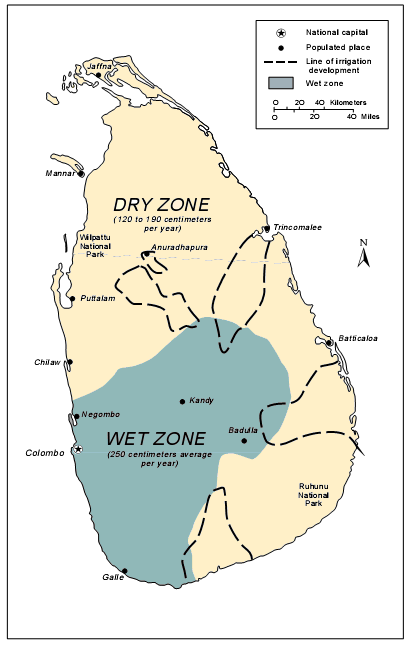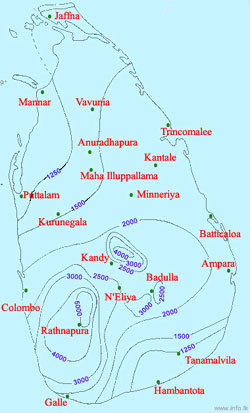

The natural vegetation of the dry zone is adapted to the annual change from flood to drought. The typical ground cover is scrub forest, interspersed with tough bushes and cactuses in the driest areas. Plants grow very fast from November to February when rainfall is heavy, but stop growing during the hot season from March to August. Various adaptations to the dry conditions have developed. To conserve water, trees have thick bark; most have tiny leaves, and some drop their leaves during this season. Also, the topmost branches of the tallest trees often interlace, forming a canopy against the hot sun and a barrier to the dry wind. When water is absent, the plains of the dry zone are dominated by browns and grays. When water becomes available, either during the wet season or through proximity to rivers and lakes, the vegetation explodes into shades of green with a wide variety of beautiful flowers. Varieties of flowering acacias are well adapted to the arid conditions and flourish on the Jaffna Peninsula. Among the trees of the dry-land forests are some valuable species, such as satinwood, ebony, ironwood, and mahogany.
In the wet zone, the dominant vegetation of the lowlands is a tropical evergreen forest, with tall trees, broad foliage, and a dense undergrowth of vines and creepers. Subtropical evergreen forests resembling those of temperate climates flourish in the higher altitudes. Montane vegetation at the highest altitudes tends to be stunted and windswept.
 ශිල්ප 64
ශිල්ප 64